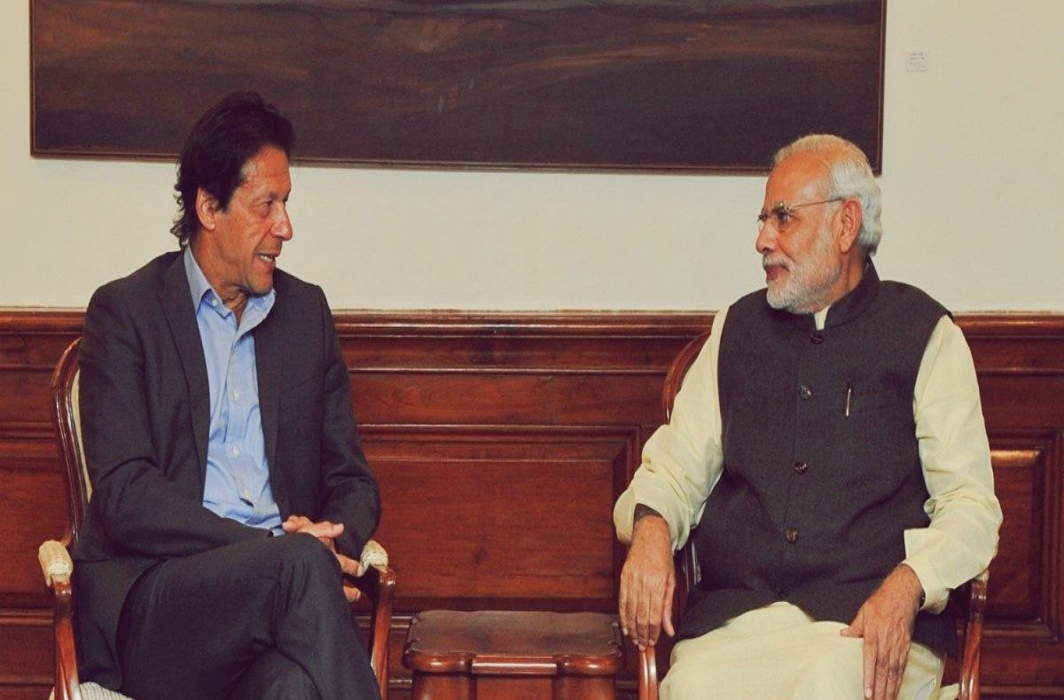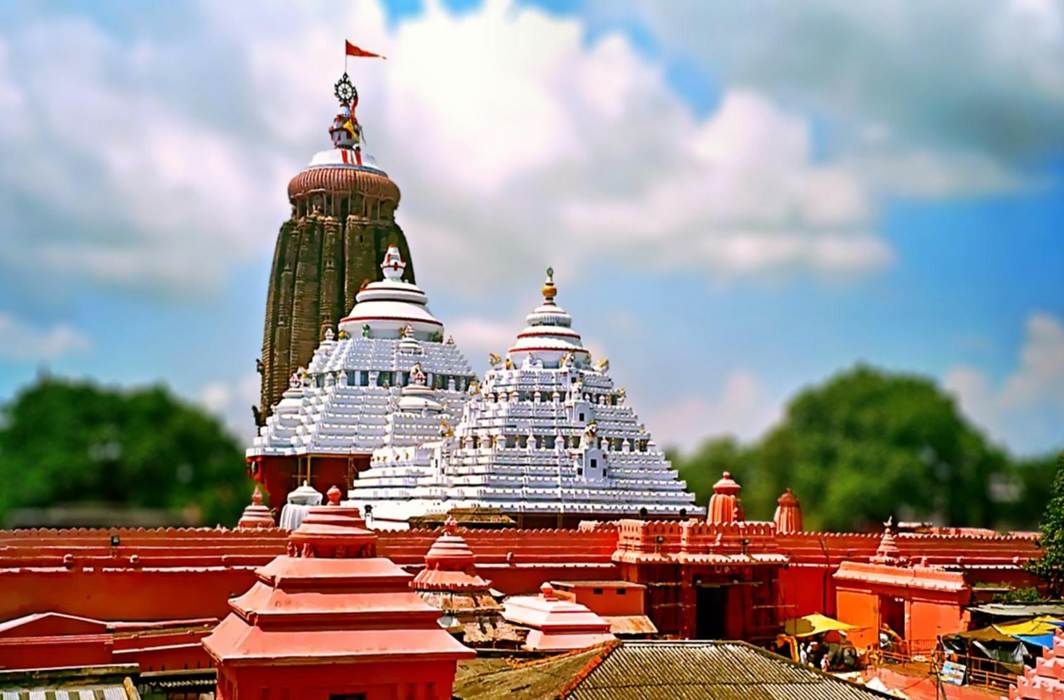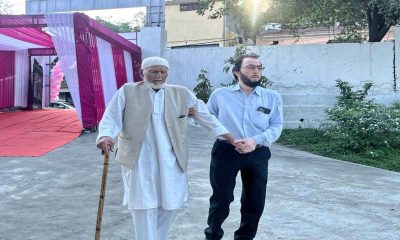India News
Harappa to Haryana, a shift in understanding

[vc_row][vc_column][vc_column_text]With about 1,500 archaeological sites in India coming to light in recent years, there’s euphoria in some circles over the eastward migration of the focus of what was hitherto known as the Indus Valley Civilisation. But matters of ‘nationalist’ pride aside, what do these finds, especially the ones in the northern state, show?
By Meha Mathur
How archaeological discoveries alter our understanding of history and make redundant an entire body of historical research and writing! The Indus Valley Civilisation of the third millennium BC was so called because before Independence, most of the sites that came to light were located in the Indus Valley—the most noticeable of which were Harappa and Mohenjo-daro.
After Partition, India was rendered poorer, being left with just a handful of sites, like Kalibangan, Dholavira, Daimabad and Lothal, to boast of as outposts of Indus valley culture. But now, about 1,500 sites have been discovered in India, as compared to the just-about-400 in the Indus Valley region.
Of these, Rakhigarhi has emerged as the most important site. This site, excavated first in 1997-2000 by the ASI and in 2015 by the Deccan College and Haryana Archaeological Survey under the supervision of Dr Vasant Shinde, has revealed a goldmine of information on the Harappan culture. In terms of geographical area, it’s bigger than Harappa and Mohenjo-daro. The five mounds that have been excavated—a large area can’t be dug up because of the settlement existing on the site—reveal urban features that correspond to Harappa and Mohenjo-daro.
Rakhigarhi speaks of a continuous occupation starting from the pre-Harappan phase to one of urbanization. In the pre-Harappan phase dating to around 6th millennium BC, there were circular huts. Bricks were introduced at a later stage.
Dr Amarendra Nath, former director (archaeology), Archaeological Survey of India, who conducted the excavations at Rakhigarhi in 1997-2000, describes the range of economic activities at this site, located along the once-existent Drishadvati river. He says there’s evidence of internal network of acquisition of raw material from Mathura, the Sulaiman, Aravali and Shivalik ranges of mountains and the Hajra hills in Pakistan. They got semi-precious stones and mollusc shells from Kutch—the latter used for purpose of making bangles.
Archaeologists have also been able to identify production processes, Dr Nath said. For example, residue of mollusc shells have been found after the product had been prepared, indicating that artisans were located there. Similarly, stages of bead-work (from acquiring the material through chiseling and polishing to the finished product) have been identified. There is also presence of cylindrical seals which are considered to have been imported from Mesopotamia.
Wazir Chand, a resident of Rakhigarhi, describes what a rich repository of material remains of the civilisation Rakhigarhi has been. As a child, he would come back home with bagsful of terracotta toys from the site to play with. As the site came to the notice of archaeologists, and they came to know of this young boy having such a treasure trove, they enlisted his support in their expeditions and he has become a rich resource-person, guiding the who’s who of India, including Pranab Mukherjee, and giving interviews to international publications. He had his own small museum, housed in a room, but later handed over his collection to the ASI.
As he guides us through the mounds, now covered with ugly black sheets and topped with layers of soil to protect the structures, he points to the presence of carnelian beads, perforated jars, wheeled toys with and many more items typical of Harappan culture. And he picks up shards of broken pottery—the mounds are strewn with these, among cow dung cakes as also garbage—to describe what the original object would have been like.
Beliefs of the early residents can also be gleaned through the skeletons that have been found in the cemetery area. These show the importance that women enjoyed in the society. Dr Nath says the number of offerings made to them were more than what the men got. Gold and jewellery, including shell bangles, was offered to them. And he ventures to add that this is a legacy that continues to this date.
As to the famed Harappan culture town planning, there was a citadel, surrounded by mud brick fortification wall. It had platforms, brick well, fire altars, drains of various sizes. But if you think you can drive down to have a glimpse of the well-planned streets, you will be disappointed. Because the bricks used were sun-baked, they can disintegrate fast if exposed to moisture, and therefore as a precaution, archaeologists cover the entire site with black sheets once the excavations are done.
Among the other sites excavated in Haryana are Kunal village, Bhirrana and Banawali in Fatehabad district and Farmana in Rohtak district.

The star is a common motif found on pottery. It is believed to have been used as an identification mark for commerce
This writer got a chance to visit some of these sites in the sweltering heat of April, with a dedicated foot soldier of archaeology, Appu Singh. A postgraduate in Ancient History, Appu Singh is pursuing his PhD in Archaeology while teaching at a school, and has traversed hundreds of kilometers on each scouting expedition, hunting for possible sites. From the terrain of the villages he can make out that a given village or field is sitting on a minefield of archaeological finds. Conversing with villagers, looking at the pottery shards lying around and taking a recording of geographical coordinates, he reports to senior archaeologists.
This author got to visit some of the prominent sites with Singh.
At Kunal in Fatehabad district, Hakra Ware, a pottery type associated with pre-Harappan phase has been found by archaeologists. Hakra Ware was followed by Harappan pottery—red beakers and jars. From below-ground level houses to above ground houses of standardized mud brick have been excavated. Steatite and shell seals bearing geometric pattern have also been found. A strikingly neat star design on a pottery shard could have been an identification mark used by traders, says Singh. Jewellery including a silver tiara, gold ornaments, semi-precious stones and beads of lapis lazuli and agate are also found.
Banawali in Fatehabad district is fortified site, where all early, mature and late Harappan phases have been found. Historian Upinder Singh, in her book “A History of Ancient and Early and Early Mediaval India” writes that the Early Harappan phase wasmarked by mud brick houses with hearths and plastered storage pits. Pottery was red or pink, with black designs. A wall divided the fortified town into citadel and lower town. The citadel had its own fortification, including a moat. Mud brick houses had raised platform (chabutara).
An interesting find at the site was a well that has been covered with a shed for protection from natural elements. Perhaps other sites can take a cue from this site and cover sections of excavated houses to realize the tourist potential. The well was made of baked bricks. Baked bricks were also used for bathing area, pavements and drains. As Upinder Singh writes, a multi-roomed house revealed a bathroom too. Many seal were recovered from this house. From another house lots of beads of gold, lapis lazuli, carnelian, a touchstone with streaks of gold were found.
Bhirrana in Fatehabad is the oldest site found so far, dating to 7th millenium BC. The site has revealed continuous occupation, starting from pre-Harappan phase of Hakra Ware, early Harappan and mature Harappan. In early Harappan phase, mud brick houses including one with six rooms and a central courtyard have been found. Red pottery, bichrome ware, jewelry, bull figurine, rattle, wheel, terracotta bangles, carnelian, steatite, shell, bone objects, pounders, gamesmen have been found.
As far has town planning is concerned, there was a massive fortification wall of mud brick and multi-roomed houses. One house had 10 rooms with a verandah and courtyard, writes Upinder Singh. Another house with six rooms had floor with mud brick. Its brick walls were plastered with mud. There was a 4.8 meter road running north to south. A red pottery piece with female figure like dancing girl has also been found.
The excavations at these sites have helped our understanding of the Harappan civilization in two ways: demonstrating that there was continuous occupation at these sites from Pre-Harappan and early Harappan to mature and late Harappan phases, and therefore that these were indigenous settlers, who evolved from being pit dwellers to rural and semi-rural and finally urban settlements.
And also in showing that it was a vast civilisation not confined to the Indus valley. It was not that the sites of Kalibangan in Rajasthan, Lothal in Gujarat and Daimabad in Maharashtra were some distant outposts. Rather, there were numerous thriving urban settlements with production bases and trading.
Broadly, the settlements found in Haryana were along the banks of two rivers that have dried up, and it’s open to debate whether the rivers that sustained these sites are Saraswati and Drishadwati that are mentioned in the Vedas.
Do these sites also shed light on how the Harappan culture might have declined? Entire generations of history students, like this writer, grew up reading the Aryan invasion version of ancient Indian history. The decline of “Indus Valley” culture due to either climatic reasons and/or attacks from Aryan tribes from Eurasia pushed the settlers of Indus valley sites deep into the forests of peninsula, who alternatively became dasas, dasyus or the Dravidian populace.
The Indus culture was understood to have declined around 1800-1700 BC, while the Rig Veda, which was supposed to be the mouthpiece of the invading tribes of Aryans, was composed around 1500-1200 BC, and the Mahabharata, which suggests the eastward movement of Aryans during the later Vedic age, was composed around 1000 BC to 800 BC.
But Dr Amarendra Nath provides a new dimension: It was palaeo-climatic event which was responsible for the decline of Harappan sites. As it became difficult to live in an area due to depleting resources, people shifted to other areas where they found water and space for agriculture. Small clusters started moving from Saraswati-Drishadwati valley to Yamuna plains. He says had there been attacks, there would have been multiple skeletal remains in one level. But that is not the case. The skeletons have been found from different levels. And even if we have identified killings, these are from different levels.
An important question that needs to be answered is: as people migrated, they would have carried their knowledge and skills with them. But do we find that level of skills in settlements where they migrated? Do we find the same level of urbanisation and economic activities over the next few centuries?
Dr Nath answers that urban lifestyle can decay. In Harappan culture, urban lifestyle grew because of trade, including foreign trade. Trade can survive only when there is market. And when the market dies due to any reason, the industry collapses. And those artisans look for other modes of survival and go to agriculture. The skilled artisans would have started catering to local needs.
This happens even today. He cites the example of Kathputli (puppet) performers, who might be forced to start driving e-rickshaws if we stop seeing kathputli shows.
Rather than looking at the decay through Aryan invasion prism, he says, one should realize that the Indian civilisation is a civilization of continuity where things survived despite odds and people moved in search of livelihood. He goes to the extent of saying that we find almost everything in Harappan civilisation which is found in Vedic literature. Only thing is we should look for it.
On the question of migration of tribes from West to East, he says: “No, people were coming, just as people were going from here–Indus to Mesopotamia. Indus seals have been found there, implying that some commodities were transported from Harappa to Mesopotamia and seals discarded after opening consignment.”[/vc_column_text][/vc_column][/vc_row]
2024 Lok Sabha Elections
Lok Sabha elections 2024: 102-year-old man walks to polling booth to cast his vote in Jammu
The lowest voter turnout so far was noted in Ramgarh at 1.53%.
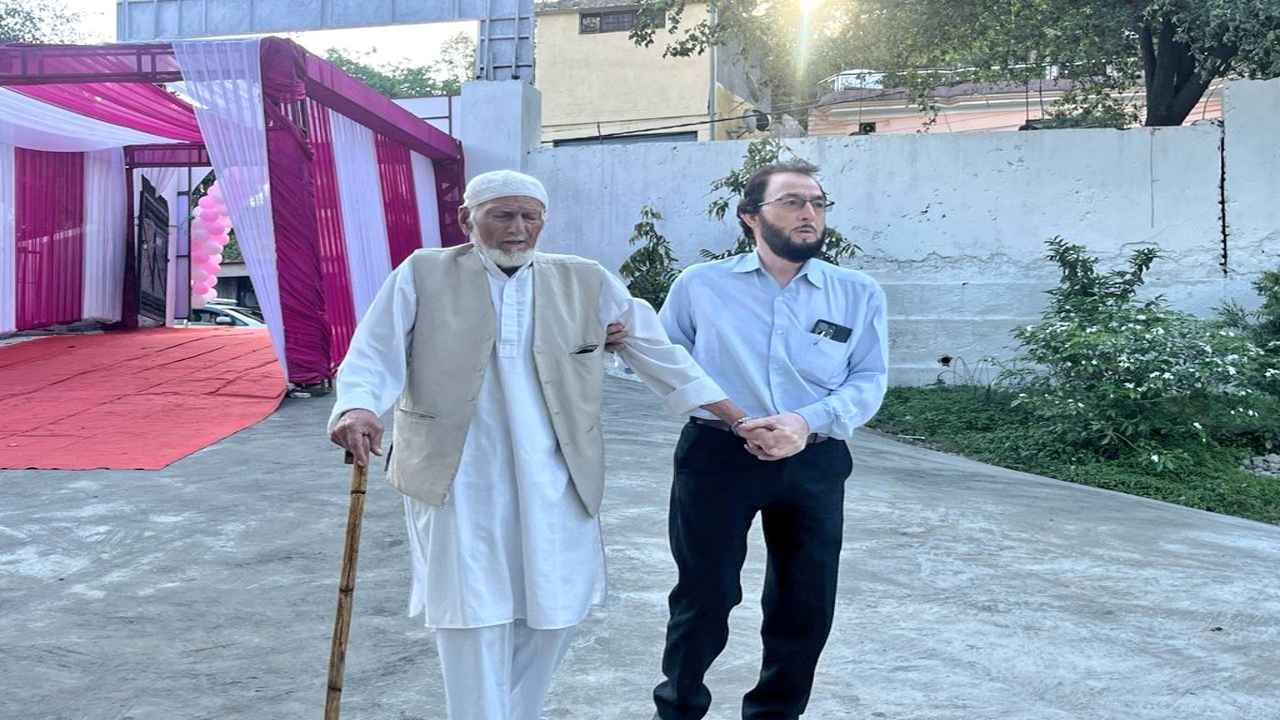
A 102-year-old man showed up at a Jammu polling place to cast his vote in the second phase of the Lok Sabha elections on Friday. Haji Karam Din arrived at the Reasi district polling place in the Jammu constituency with a walking stick in hand and a family member who assisted him with the pre-voting process.
Haji Karam Din, who is 102-year-old, showed his inked finger and posed for pictures outside the polling booth after casting his vote. He said voting at this polling place at this age makes him very happy. He has always cast his vote. Even at the age of 102, this experience is still ongoing, he said.
Reasi district is a part of the Jammu parliamentary constituency, and 22 candidates are up for vote with around 17.81 lakh eligible voters.
BJP’s sitting member Jugal Kishore Sharma is aiming for a third term in office following wins in the elections of 2014 and 2019. Former minister and Congress candidate Raman Bhalla is his main opponent.
Voting in the Jammu-Reasi Lok Sabha constituency began with eager voters showing up at the polling places. Some of them were wearing traditional Dogra attire.
In 2,416 polling places around the constituency, voting got underway at 7 a.m., and 10.39% of the total votes were cast by 9 a.m. In the 2019 Lok Sabha elections, Jammu recorded a 74% voter turnout.
Following the repeal of Article 370 and the division of the former state into two Union Territories five years ago, this is Jammu’s first significant election.
The Akhnoor segment received the highest percentage of votes, 14.24%, followed by Reasi (14.13%), Gulabgarh (13.53%), Shri Mata Vaishnodevi (12.71%), Marh (12.31%), Samba (8.56%), R S Pura Jammu South (8.17%), and Suchetgarh (5.67%), according to the officials. Ramgarh recorded the lowest voter participation of 1.53% so far.
Low attendance was observed in the border areas of the districts of Jammu and Samba till nine in the morning, according to poll data.
The officials said that big lines of voters were observed at several polling places throughout Jammu city. Voters were observed heading towards polling places early in the morning.
India News
Salman Khan house firing case: NIA interrogates arrested shooters Sagar Pal, Vicky Gupta for three hours
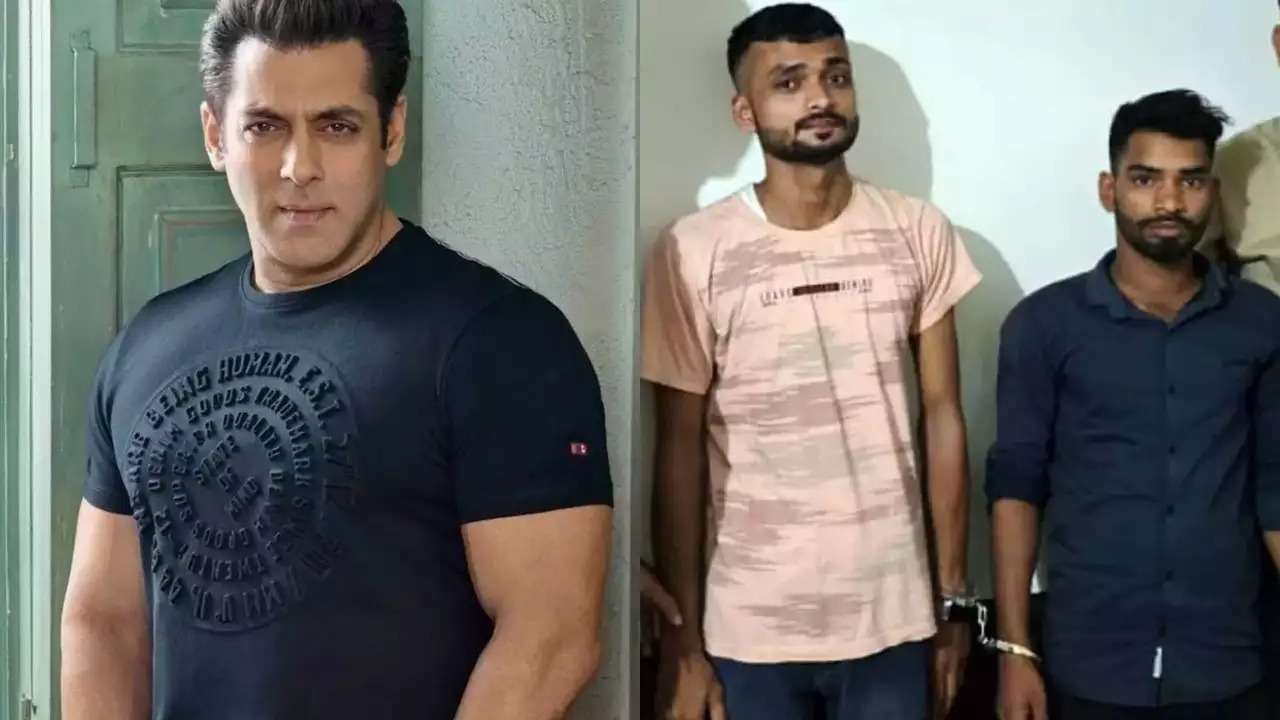
The investigation into the shocking firing incident that took place outside Salman Khan’s house on April 14 keeps bringing new updates with every passing day. In this case, Sagar Pal and Vicky Gupta, the two suspected shooters, have already been taken into custody.
The two shooters have reportedly been questioned by the National Investigation Agency (NIA), according to a new development. Every day that goes by, more information is revealed about the inquiry into the shocking firing incident that happened outside Salman Khan’s house on April 14. Sagar Pal and Vicky Gupta, the two accused shooters, are being held in custody after their first arrests.
It was recently discovered that the two shooters were questioned by the National Investigation Agency (NIA).
NIA has reportedly begun questioning Sagar Pal and Vicky Gupta, who were detained a few days ago for firing openly outside Salman Khan’s Galaxy Apartments in Mumbai, according to a recent update posted on their X (Twitter) account. NIA has interrogated shooters Vicky Gupta and Sagar Pal, arrested in the firing case, the tweet said.
According to the reports, two Punjabi residents were taken into custody by the Mumbai Crime Branch yesterday on suspicion of being involved in the recent shooting incident outside the house of Bollywood actor Salman Khan.
The two men, Sonu Subhash Chander and Anuj Thapan, provided guns to Sagar Pal and Vicky Gupta, the shooters, according to information released by the Mumbai Crime Branch. It was also reported that they had communication with the Bishnoi gang. For those who don’t know, hours after the incident, Anmol Bishnoi, the brother of gangster Lawrence Bishnoi, allegedly took credit for the firing in a Facebook post.
The shooters’ custody has been extended by Mumbai’s Esplanade Court until April 29.
Meanwhile, on the workfront Salman Khan was last seen in Tiger 3 alongside Katrina Kaif.
2024 Lok Sabha Elections
PM Modi calls for high voter turnout in second phase of Lok Sabha elections 2024, says your vote is your voice
Prime Minister Narendra Modi urges citizens to participate in record numbers during the second phase of polling for the Lok Sabha Elections 2024.
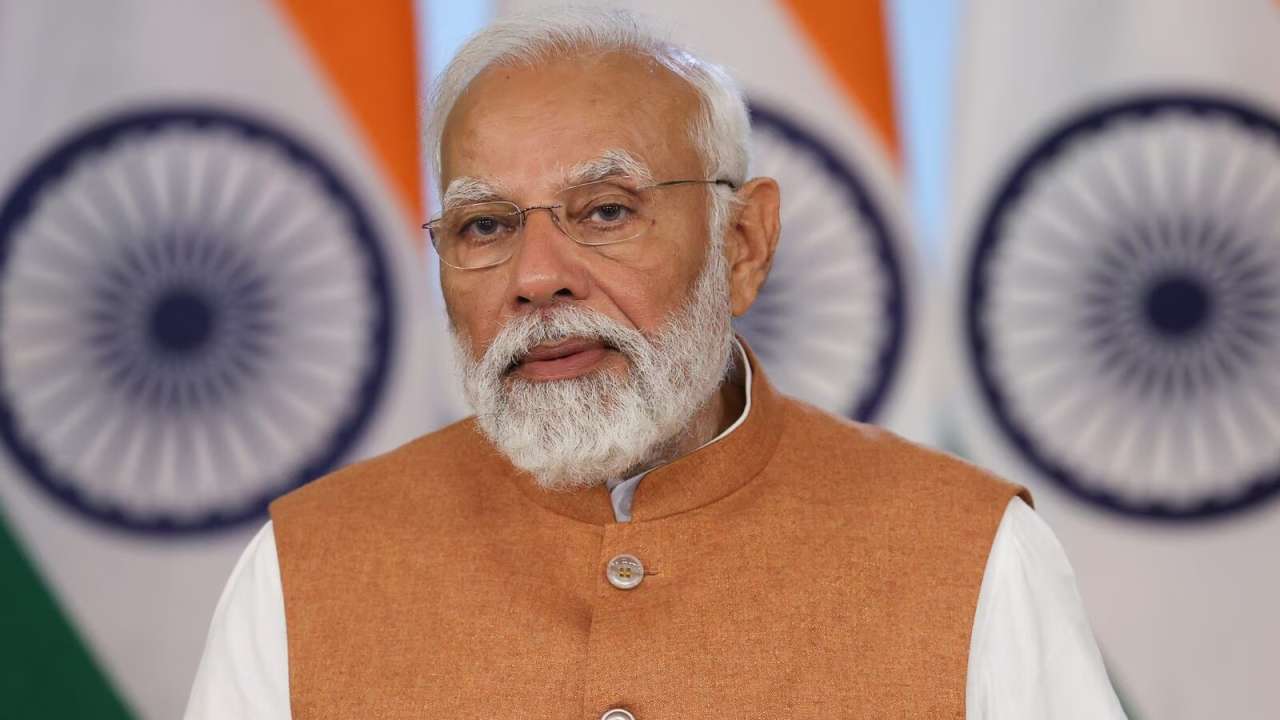
Prime Minister Narendra Modi took to social media as the second phase of voting for the Lok Sabha Elections of 2024 got underway across the country to encourage voters to cast votes in huge numbers. PM Modi emphasized in his speech the value of voting in preserving democracy and notably urged women and young people to cast votes.
Taking to social media X, formerly Twitter, PM Modi wrote, urging everyone in constituencies to participate in record numbers in today’s second phase of the Lok Sabha elections. He said our democracy is strengthened by high voter turnout. He especially urged female and youth voters to cast votes in large numbers. Your vote is your voice, he added.
It is important to remember that 88 Lok Sabha constituencies—spread among 13 states and Union Territories—are presently holding polls. Twenty seats in Kerala, fourteen in Karnataka, thirteen in Rajasthan, eight in Uttar Pradesh and Maharashtra, six in Madhya Pradesh, five in Assam and Bihar, three in Chhattisgarh and West Bengal, and one in each of Tripura, Jammu & Kashmir, and Manipur are currently up for election. Notably, the untimely death of a Bahujan Samaj Party (BSP) candidate has resulted in the Madhya Pradesh constituency of Betul being spared from voting on April 26.
Meanwhile, Chief Election Commissioner Rajiv Kumar emphasized the thorough planning that has taken place over the previous two years and reassured the public of careful security measures at every voting place. They have been preparing for the last two years, he said. At each booth, the arrangements are ready. Everything has been prepared for the voters, including fans and drinking water. Voters must turn out to cast their votes. Safety has been considered. There is zero information available anywhere regarding violence. However, there will be forces at every booth.
-

 Cricket news19 hours ago
Cricket news19 hours agoTelugu superstar Mahesh Babu meets SRH captain Pat Cummins, says it is an absolute honour
-

 Education24 hours ago
Education24 hours agoFarmer’s son Nilkrishna Gajare Nirmalkumar from Maharashtra scores 100 NTA score in IIT-JEE Mains 2024
-

 Entertainment22 hours ago
Entertainment22 hours agoAamir Khan to begin shooting in Delhi for Sitaare Zameen Par next month
-
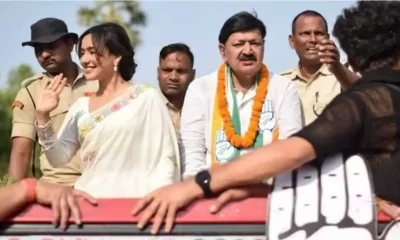
 2024 Lok Sabha Elections22 hours ago
2024 Lok Sabha Elections22 hours agoBollywood actor Neha Sharma campaigns for her father Ajit Sharma in Bhagalpur, Bihar
-

 Cricket news20 hours ago
Cricket news20 hours agoAB De Villiers criticizes RCB’s decision to let go Yuzvendra Chahal, says it was a hearbreaking moment
-
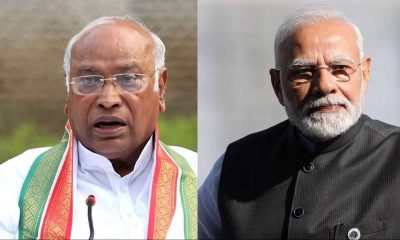
 2024 Lok Sabha Elections19 hours ago
2024 Lok Sabha Elections19 hours agoMallikarjun Kharge writes to PM Modi seeks time to explain Congress’s Nyay Patra
-

 Trending18 hours ago
Trending18 hours agoSocial media user shares video of Air India ground staff throwing expensive musical instruments, video goes viral
-
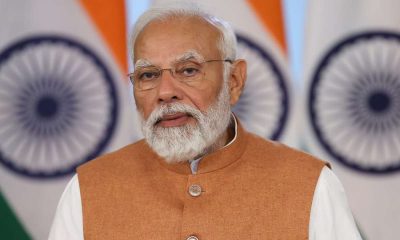
 2024 Lok Sabha Elections2 hours ago
2024 Lok Sabha Elections2 hours agoPM Modi calls for high voter turnout in second phase of Lok Sabha elections 2024, says your vote is your voice







